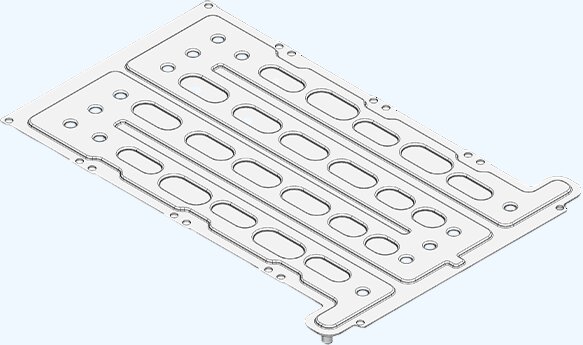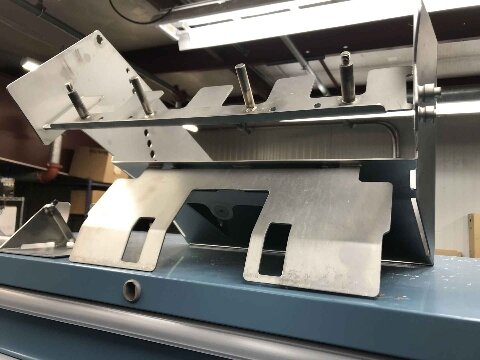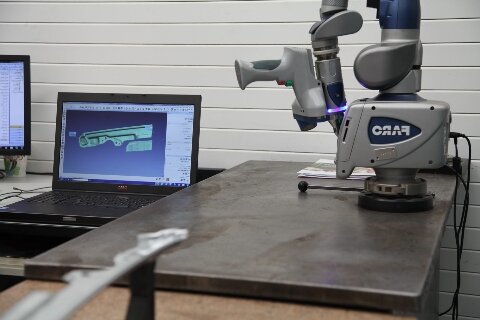Precision doesn’t stop once a part comes off the machine. Parts that fit perfectly before coating can suddenly feel too tight, too loose, or slightly off once the finish is applied. Coatings, such as plating, powder coating, and anodizing, protect metal and enhance its appearance, but they also add thickness—sometimes more than expected.
Even a few microns can make a significant difference when tolerances are tight. That extra layer can affect how parts fit or move together. Because of this, dimensional accuracy after coating needs the same level of care as machining or forming. In this article, we’ll look at how coatings change final dimensions and what you can do to keep every part precise from start to finish.
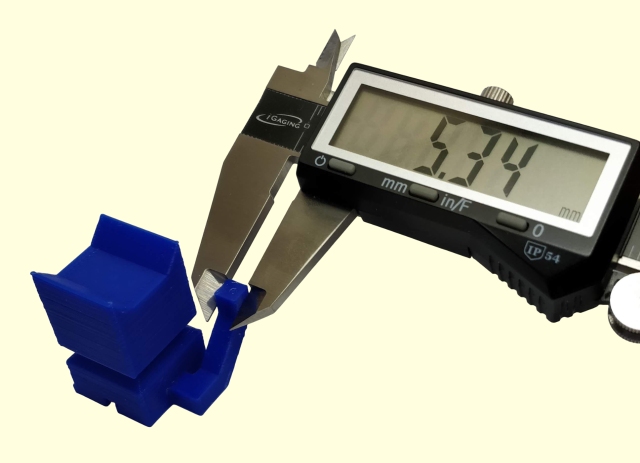
What Is Dimensional Accuracy?
Dimensional accuracy refers to the degree to which a finished part matches its intended size and shape. It indicates whether the fabrication and finishing processes have maintained the part’s accuracy to the design. Every step—cutting, bending, welding, or coating—can slightly change a part’s size. Engineers manage these changes through defined tolerances and precise measurement checks. The goal is to keep each part as close to the design as possible, ensuring it fits and performs correctly.
Tolerances set the range within which a dimension can vary from its design value. For example, a tolerance of ±0.1 mm means the part can be 0.1 mm larger or smaller than the target size. These limits depend on the material, the manufacturing method, and the part’s intended use. After coating, tools such as micrometers and coordinate measuring machines (CMMs) help confirm that the part stays within tolerance.
Industry standards support this process. ISO 2768 defines general tolerance classes, while ASME Y14.5 outlines rules for geometric dimensioning and tolerancing (GD&T). By following these standards, manufacturers can ensure that coated parts achieve the same level of precision, regardless of where they are produced.
Types of Coatings Used in Metal Fabrication
Different coatings serve different purposes — protecting the metal, enhancing its appearance, or preventing corrosion. Each coating adds a measurable layer to the surface, which can change the final size of the part.
Electroplating and Electrocoating
Electroplating adds a thin layer of metal to the surface using an electric current in a chemical solution. Common materials include nickel, zinc, and chrome. The coating thickness usually ranges from 5 to 25 microns, depending on the plating time, voltage, and solution composition. This extra layer builds up evenly across the surface, slightly increasing the part’s size.
Electrocoating, also known as e-coating, works similarly but utilizes organic materials, such as epoxy. It provides a uniform finish on complex shapes, though dimensional changes still need to be included in design planning.
Powder Coating
Powder coating applies dry powder to the surface using an electrostatic charge, then cures it under heat to form a tough, smooth finish. The final coating thickness typically ranges from 50 to 150 microns. Although the layer is generally uniform, corners and edges may build up slightly thicker.
During curing, high heat can cause slight distortions, especially in thin sheets or delicate parts. These small shifts may seem minor, but they can still impact how parts fit together or the tightness of an assembly.
Anodizing
Anodizing changes the surface of aluminum by forming a controlled oxide layer through an electrolytic process. It doesn’t add a new material but converts part of the metal surface itself. The layer grows both inward and outward — roughly half in each direction.
For example, a 10-micron anodized layer increases the total dimension by approximately 5 microns on each side. While this change is small, it still matters in high-precision assemblies. Anodizing enhances corrosion resistance, wear resistance, and color options, but requires careful dimensional planning.
Painting and Wet Coating
Wet coating applies liquid paint using a spray, brush, or dip method. After drying, the coating thickness usually ranges from 25 to 75 microns. Because the application depends on operator skill and paint thickness, it can vary across the surface.
As the solvent evaporates during drying, slight shrinkage can occur. While these changes are minor, wet coatings are generally less consistent than powder coatings, which can create minor dimensional variations in precise parts.
Conversion Coatings
Conversion coatings — such as chromate, phosphate, or black oxide — form fragile chemical layers, usually under 2 microns thick. They enhance corrosion resistance and provide a superior base for paint or plating, while maintaining minimal dimensional changes.
Because they react chemically with the surface instead of building on top, conversion coatings are ideal for parts that require tight tolerances. They are often used before other coatings or as a standalone finish for minimal dimensional impact.
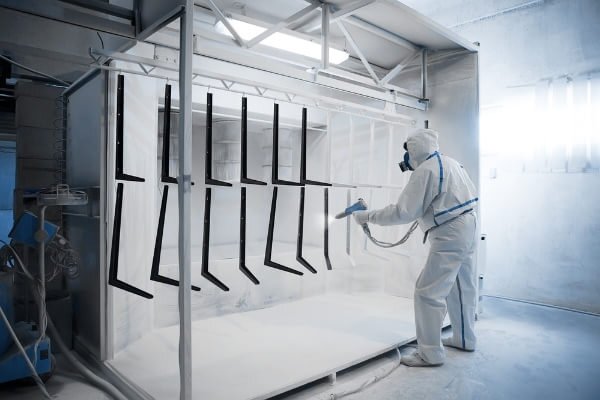
How Coatings Affect Dimensional Accuracy?
Coatings do more than protect metal—they also change the part’s surface size and shape. Factors such as coating thickness, heat during curing, and uneven buildup can all impact precision.
Coating Thickness and Build-Up
Every coating adds a measurable layer to the surface. When applied evenly, it increases all exterior dimensions by twice the coating thickness, with one layer on each side. For example, a 20-micron coating adds about 40 microns to a diameter.
This buildup can cause trouble in tight fits, press assemblies, or mating parts. Threads, holes, and sliding components are especially sensitive, as even small changes can lead to jamming or loss of clearance. To avoid this, engineers often adjust the pre-coating dimensions so that after finishing, the part still meets its intended fit and function.
Heat and Curing Distortion
Some coatings need high heat to cure, such as powder coatings or baked paints. When metal is heated, it expands. Thin sections or large flat areas may warp slightly, and when cooled, they can retain a bit of that distortion.
The amount of change depends on the type of metal, sheet thickness, and part shape. Welded or large assemblies are more likely to shift than small, solid parts. To control this, manufacturers use proper fixturing, manage oven temperature carefully, and monitor cooling rates to reduce heat-related distortion.
Uneven Deposition
No coating spreads perfectly evenly. Corners, edges, holes, and deep recesses often get different coating thicknesses than flat surfaces. This variation can slightly alter the dimensions and surface finish.
For example, powder coating tends to collect more on sharp edges, while electroplating can thin out in recessed areas where electrical current is weaker. These irregularities can affect how parts fit together or the smoothness of their operation. Masking critical areas, adjusting part orientation, and fine-tuning process settings help achieve more consistent coating and better dimensional control.
Measurement and Inspection After Coating
Measuring coated parts accurately is crucial for verifying that they still meet design tolerances. Careful inspection ensures that the coating process does not affect the part’s function, fit, or assembly quality.
Pre-Coating and Post-Coating Measurements
Pre-coating measurements provide a reference point. Engineers use this baseline to compare against post-coating results and determine how much the coating has changed the size.
Before coating, critical dimensions are measured using tools such as calipers, micrometers, or coordinate measuring machines (CMMs). After coating, the same points are rechecked to see if any buildup, heat distortion, or uneven coverage has caused deviations.
For precision applications, coating thickness is often measured separately using specialized tools, such as thickness gauges or magnetic induction instruments. These readings help ensure that each layer remains within the required range and that the final parts stay within tolerance limits.
Non-Contact Measurement Tools
Non-contact measurement tools are often used after coating because they prevent scratches or pressure marks on the surface. Laser scanners, optical profilometers, and CMMs with touchless probes collect precise surface data without touching the part.
Laser scanners can map complex geometries and show color-coded visuals of dimensional changes after coating. Optical systems can detect even a few microns of uneven buildup. By utilizing these advanced tools, engineers gain a clearer understanding of how coatings affect final dimensions and can maintain consistent accuracy across production runs.
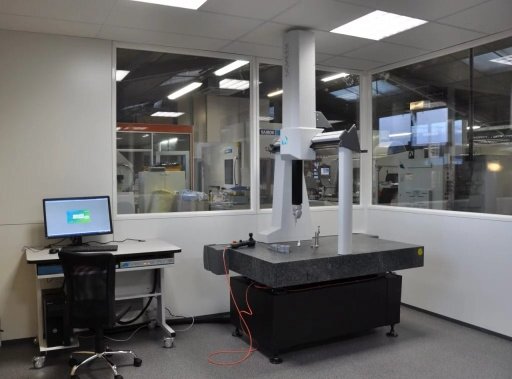
Managing Dimensional Changes in Design
Dimensional changes caused by coatings can be effectively managed when planned. By considering these effects during design and production, engineers can avoid rework, poor fits, and assembly problems later.
Design Compensation
Engineers often adjust CAD models to offset the expected coating thickness. They reduce external surfaces or enlarge holes to balance the added layer. For example, if a 20-micron coating is planned, the designer might reduce that surface by 20 microns per side before fabrication.
This method ensures that the final coated part remains within the desired tolerance. Many CAD programs also include “offset surface” or “coating allowance” functions that simplify this adjustment. Early coordination between design, fabrication, and coating teams ensures that these allowances reflect real-world coating behavior.
Process Control and Calibration
Consistent coating results are achieved through stable and repeatable processes. Operators must carefully manage variables such as bath concentration, spray distance, voltage, temperature, and curing time to ensure optimal results. Even small changes can affect coating thickness.
Routine calibration of coating equipment, such as spray guns, plating baths, or ovens, ensures consistent film thickness. Controlling the environment, including temperature and humidity, also helps maintain uniform results, especially for powder and wet coatings. Well-controlled conditions minimize variation and ensure consistent quality from batch to batch.
Fit and Assembly Adjustments
Mechanical fits must take coatings into account, especially in assemblies with tight tolerances. Engineers may design slightly looser fits or apply masking to protect critical areas such as threads, shafts, or bearing seats.
In some cases, parts are coated first and then finish-machined or reamed to restore precision. This “post-coating machining” method allows parts to achieve exact tolerances while maintaining protective layers where needed. Clear communication between coating and assembly teams ensures that every step supports the same dimensional goals.
Material and Coating Interactions
Different metals react in unique ways to coatings. Their surface energy, chemistry, and hardness influence how well the coating bonds and how much it affects overall dimensions. Understanding these interactions enables engineers to select the most suitable coating method for each material.
Different Substrate Responses
Steel, aluminum, and copper exhibit different behaviors under the same coating conditions. Steel handles heat and plating well, making it suitable for thicker coatings, such as zinc or nickel, without significant distortion. Aluminum, on the other hand, is more sensitive to heat. In processes such as powder coating or anodizing, aluminum can expand more rapidly, causing a slight change in its shape or size.
Copper conducts both heat and electricity efficiently. Coatings like nickel or tin bond well to copper but can become uneven if the process isn’t tightly controlled. The hardness of the metal also plays a role. Softer metals may allow part of the coating to sink into the surface, while harder metals cause the coating to build up more. Due to these differences, coating parameters must be adjusted to suit the specific material.
Adhesion and Thickness Trade-Off
There’s often a balance between adhesion strength and coating thickness. Stronger adhesion usually requires thicker layers or more intense processes. For example, longer electroplating times or higher current levels improve bonding but also increase overall thickness.
Thicker coatings offer better corrosion resistance but may cause the part to exceed its tolerance range. To find the right balance, engineers test coated samples to measure both adhesion strength and dimensional change. By adjusting process time, current density, or surface preparation, they can achieve durable coatings that stay within precision limits.
Looking to keep your coated parts within tight tolerances? At Shengen, we specialize in precision sheet metal fabrication with coating processes that maintain accuracy while providing strong protection. Upload your CAD files or contact our team now to get a custom quote and expert feedback on your coated parts.
FAQs
How do I calculate coating thickness tolerance?
To calculate coating thickness tolerance, start by measuring the average buildup of the coating and comparing it with the design allowance. For example, if a coating adds 20 microns per side and your tolerance is ±10 microns, the process must stay within that limit.
Which coating has the least impact on part dimensions?
Conversion coatings, such as chromate or phosphate, have the least negligible effect on part size. These coatings form fragile chemical layers—usually under 2 microns thick. They enhance corrosion resistance and paint adhesion while minimizing dimensional changes.
Can coatings be applied selectively to avoid dimensional changes?
Yes. Masking techniques can prevent coatings from being applied to specific areas that must remain uncoated. Threads, holes, or tight-fitting surfaces can be covered with plugs, tapes, or custom shields during the process. This allows the rest of the part to receive protection while maintaining the dimensional accuracy of the critical areas.
How can dimensional distortion during curing be prevented?
Distortion can be minimized through careful temperature control and fixturing. Avoid rapid heating or cooling, which can cause uneven expansion or warping. Support parts evenly inside the oven to maintain shape. When possible, choose coatings that cure at lower temperatures to reduce thermal stress on thin or complex parts.
Hey, I'm Kevin Lee

For the past 10 years, I’ve been immersed in various forms of sheet metal fabrication, sharing cool insights here from my experiences across diverse workshops.
Get in touch

Kevin Lee
I have over ten years of professional experience in sheet metal fabrication, specializing in laser cutting, bending, welding, and surface treatment techniques. As the Technical Director at Shengen, I am committed to solving complex manufacturing challenges and driving innovation and quality in each project.

